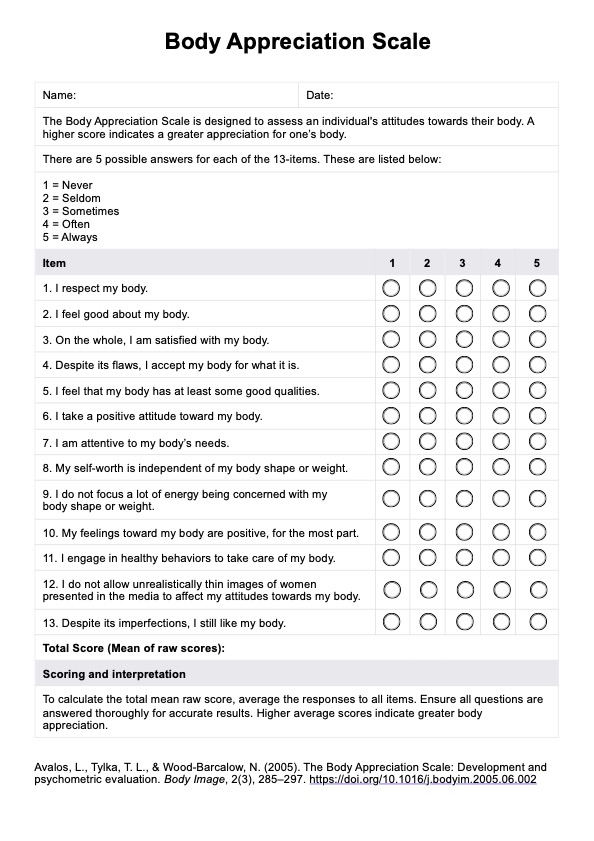Body appreciation is essential because it involves accepting and respecting one’s body, regardless of societal beauty standards. This positive attitude contributes to improved self-esteem, mental resilience, and healthier behaviors like intuitive eating and regular physical activity.

Body Appreciation Scale (BAS)
Click here to learn more about the Body Appreciation Scale and how it can be used in practice. Download a free PDF template now.
Body Appreciation Scale (BAS) Template
Commonly asked questions
Using negative, body dissatisfaction-based language reinforces harmful body ideals and can increase the risk of anxiety, depression, and eating disorders (Paterna, et al., 2021). Shifting to positive language focused on body functionality and appreciation can significantly improve mental well-being.
Social media influences body appreciation in complex ways, with both positive and negative effects. While it often reinforces unrealistic beauty standards, it can also serve as a platform for fostering the positive body image construct. Curating a social media feed to include accounts that promote self-acceptance and diversity can support body appreciation. Further cross-cultural research is essential to understand how social media impacts body image across diverse populations and cultural contexts.
EHR and practice management software
Get started for free
*No credit card required
Free
$0/usd
Unlimited clients
Telehealth
1GB of storage
Client portal text
Automated billing and online payments










